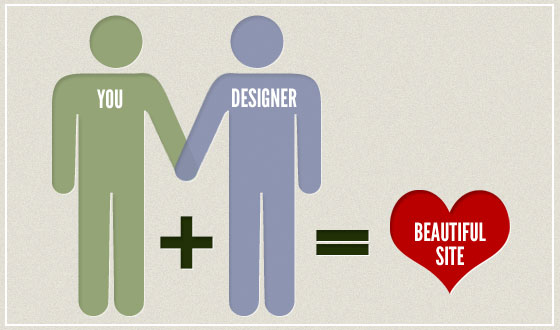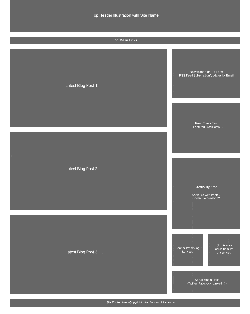
A website that gets bad conversion rates is usually the web designer’s fault. At least, that’s what many marketing experts will have you believe.
Web designers do all kinds of crazy things, like put all of the text on your site in images, code your site using nested tables, and *gasp*, the evil of all evils, use flash to develop your site.
Well, worry no more! I’m here to tell you how to get that spiffy website design you’ve always been wanting AND get great conversion rates at the same time. Yes… it can and shall be done!
Here’s how:
Look for a designer who is standards-compliant
Any good web designer or web developer who is worth her salt knows how to design and build a standard’s compliant website. Basically, what this means is that they develop the site using best practices according to the standards set out by the W3C. This includes developing your website using proper (x)html and css.
You don’t need to understand what all of this means, but you do need to be aware of it because it’s vital in order to have a well-performing website that most people can easily browse. If the designer doesn’t mention they code to standards on their website, it would be a good idea to ask before you decide to work with them to be sure.
What you should do now
Make a checklist of the minimum requirements that you should expect from a designer. You can include things like making sure they use (x)html and css to lay out documents and also require that they don’t use tables for layout.
Feed your designer good brain food
Web design is hard to define because it can include so many difficult things. But, if I had to define it using a quick and simple way, I’d call it the act of problem solving. I haven’t met a really good designer yet who doesn’t love sinking their teeth into a big fat juicy problem. It’s what keeps their work interesting, engaging, and worthwhile.

Don’t present the solution, but let them help you come up with one. All you need to do is figure out what your problem is, what the guidelines and restrictions are, and let your hungry web designer have at it. You might be surprised at the result you get when you have a great partner helping you think “outside of the box”.
Here are some examples of succulent problems you can present to your web designer:
- Our customers are having a hard time figuring out how to order our product. What do you think we can do to solve this?
- We’ve had some older customers tell us that our text on our website is difficult to read. We love the design, but we need to make this easier for them. How can we solve this?
- We need to present our new service on the homepage of our site and make it both engaging and easy to understand. But, it must not adversely affect the rest of the offers on the home page. How can we do this?
What you should do now
Do you work with designers regularly and use creative briefs? How about expanding those out to include problems that need to be solved and any restrictions? Perhaps you can also include business objectives and customer behavior data?
Bring your designer into the project as early as possible
Often, what happens during a website design project is that everything gets planned and confirmed and then it’s all thrown at the designer at the end with instructions along the lines of, “Here, do this.”.
There are two problems with this. First, the designer doesn’t have enough knowledge to make good decisions about the direction of your website. As I mentioned above, a good designer loves to help solve problems and you’ve essentially taken their problem-solving capabilities away and replaced them with robot tasks. That’s no fun.
Secondly, it’s possible that much of what you need done is impractical when it comes time to bring it into a functional and user-friendly website. That means your designer and/or developer will have to come back to you and say, “We can’t do x, x, or x”, which means you have to go back to the drawing board and figure things out again.
After being through several projects looping around in circles this way, I can tell you that it’s not a very time or cost-effective way to work. It’s much better to get your whole team involved from the beginning so everyone’s on the same page throughout the whole project.
What you should do now
Develop new processes that allow you to bring your designer in early. For example, if you use a project management system, you can add them in as team members from the start and let them be in on the conversation.
Develop wireframes for your site
I love wireframes. It’s a little embarrassing how much I love them actually. Wireframes are not appropriate for every website, but the benefits to using them are so great that it would be a crime to not mention them here.
Basically, a wireframe allows you to get a general feel of your website layout or landing page without stylistic treatment. They can be simple or complex as long as they get the job done. They might be thought of as similar to a blueprint for a building, but without the exact measurements. Here’s an example of a simple one we prepared for a client.

You may also want to check out Unbounce’s template gallery for ideas and inspiration.
The main benefit of having a wireframe in place is that it allows you to make sure you have everything on the page that needs to be there and in the spot where it needs to be. The hidden benefit is that provides an extra opportunity to communicate objectives. This is a very good thing.
For example, if you want to make newsletter subscriptions a priority on your blog site, putting it on the top right column like we did in the example is a good idea. As soon as your designer understands this and the reasoning behind it, they can find a way to design it well for you.
What you should do now
Invest in a simple wireframing tool like Balsamiq. It allows anyone to put together basic wireframes and layouts quickly and easily.
Share your customer persona and demographic data
In the end, what makes a website design good is if it works for your customer and guides them to do what you’d like them to do. What you prefer or what your designer prefers doesn’t matter much if it’s not getting you conversions or working for your business in other ways.

For this reason, it’s extremely important to know exactly who your target audience is and develop at least one persona of your ideal customer.
Much of the time people assume that designers will be more creative if you give them less information because they have more freedom that way. In reality, that’s usually the most detrimental thing you can do because you’re forcing the designer to take random shots in the dark.
However, if you have a clearly defined customer persona, it makes everything so much more straightforward and easy when it comes time to make decisions.
In your persona you can include a photo, a biography, and keywords about their personality and what types of things appeal to them. The sky is the limit really. And if you want to take it a step further, I highly recommend Bryan & Jeffrey Eisenberg’s book “Waiting for Your Cat to Bark?”
What stylistic treatment would Eve like? What colors would Eve like? Does Eve use the internet often to buy clothing? It’s all about Eve.
What you should do now
Read your copy of “Waiting for Your Cat to Bark” and let the ideas start flowing!
Getting a gorgeous design and a good conversion rate can be done! Remember, finding a professional designer, offering juicy problems, collaboration, and good communication will get you both.
